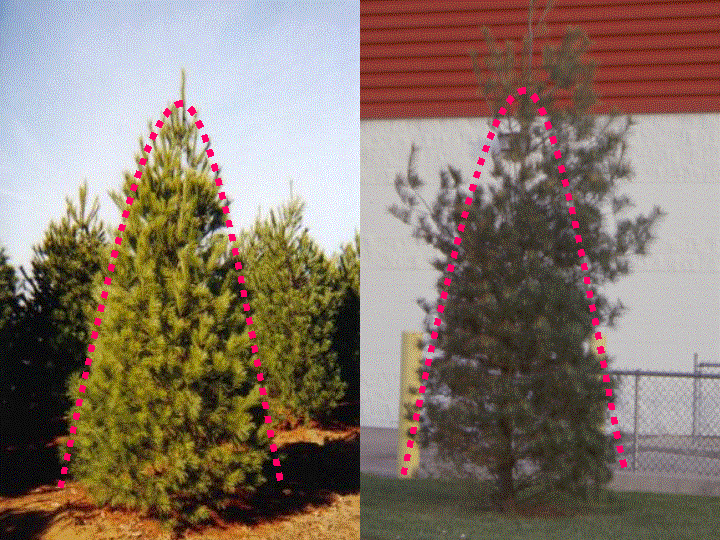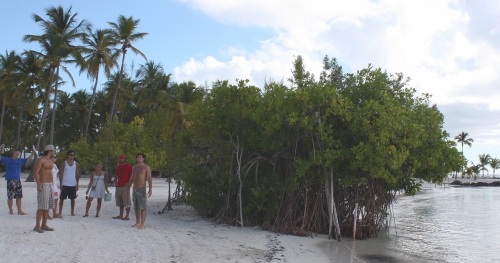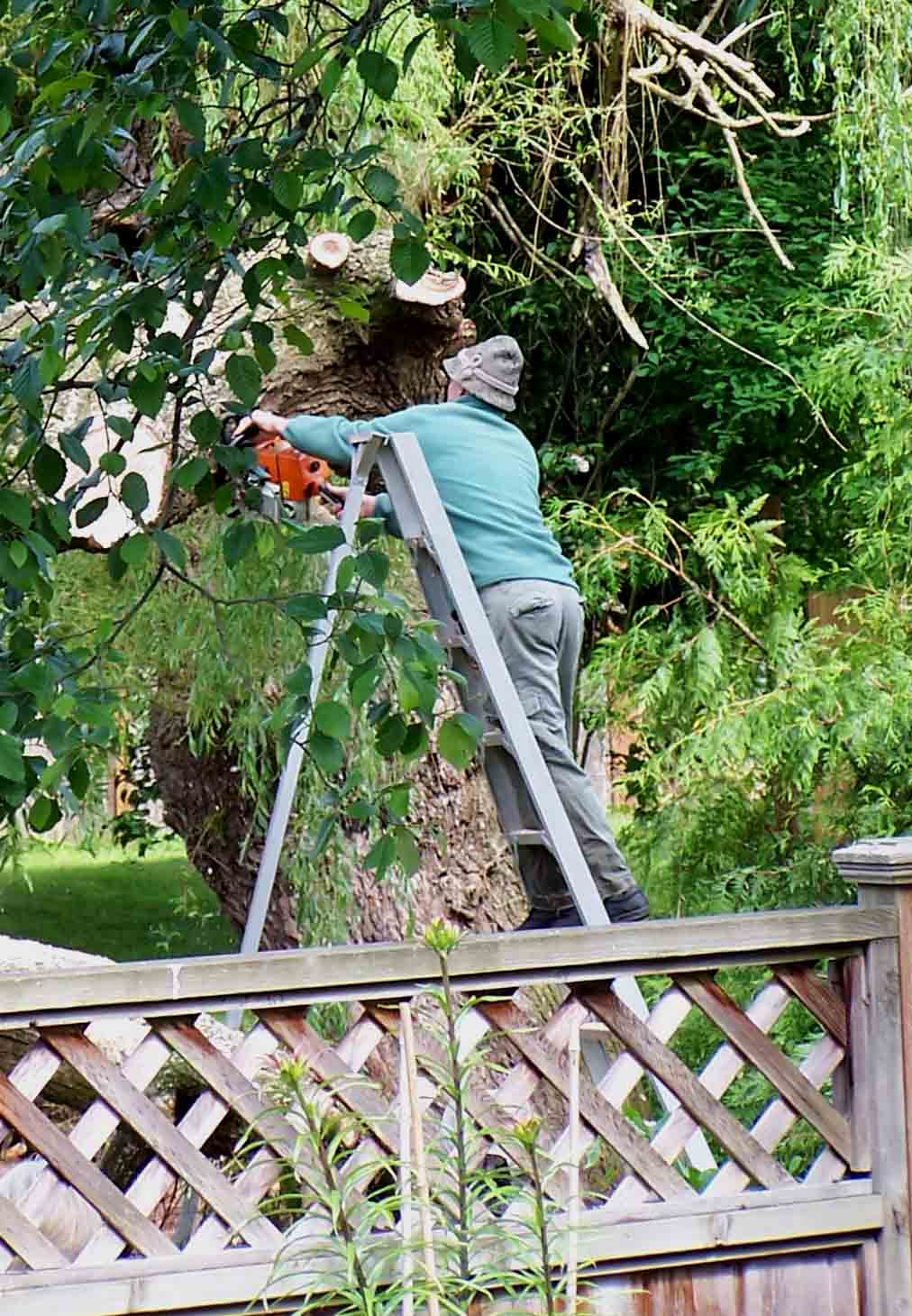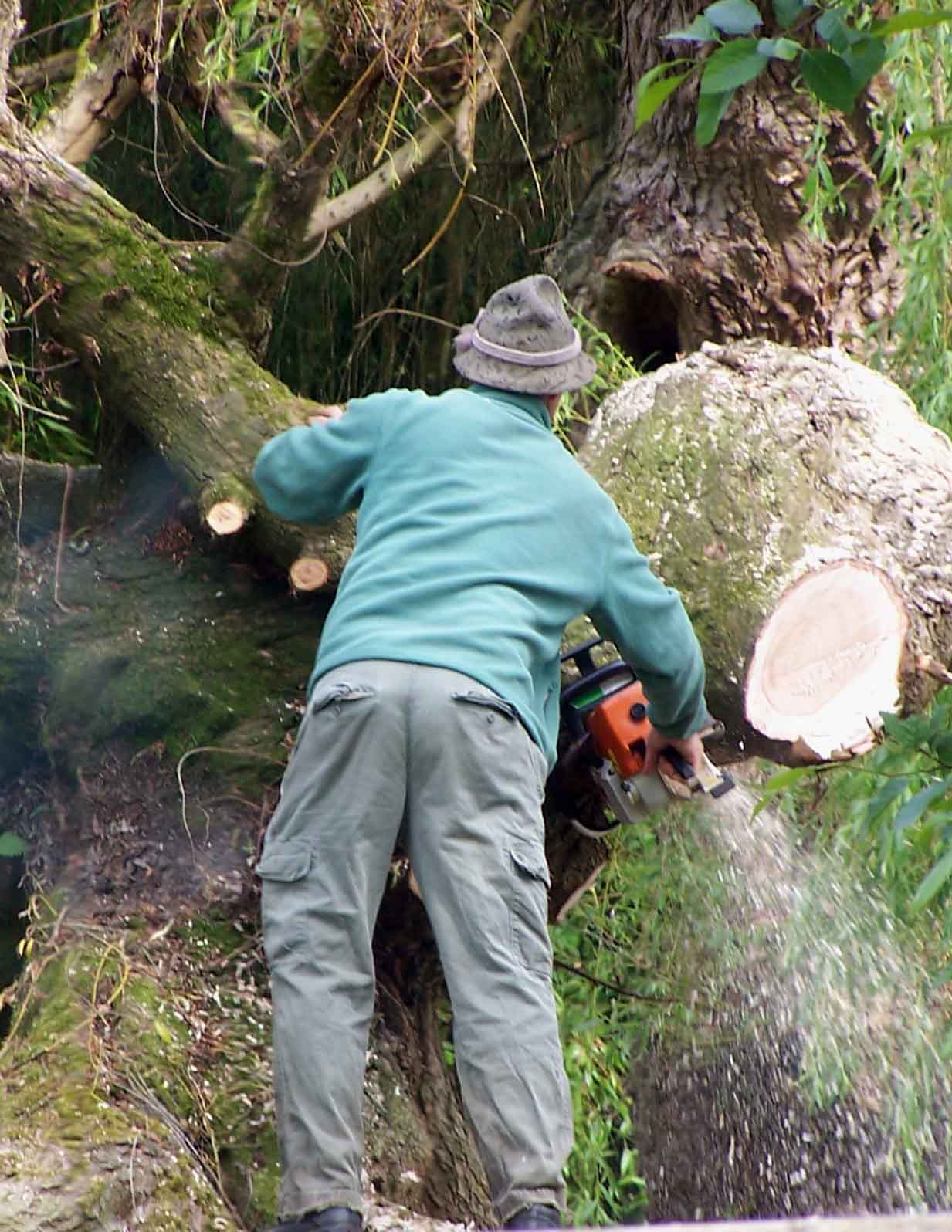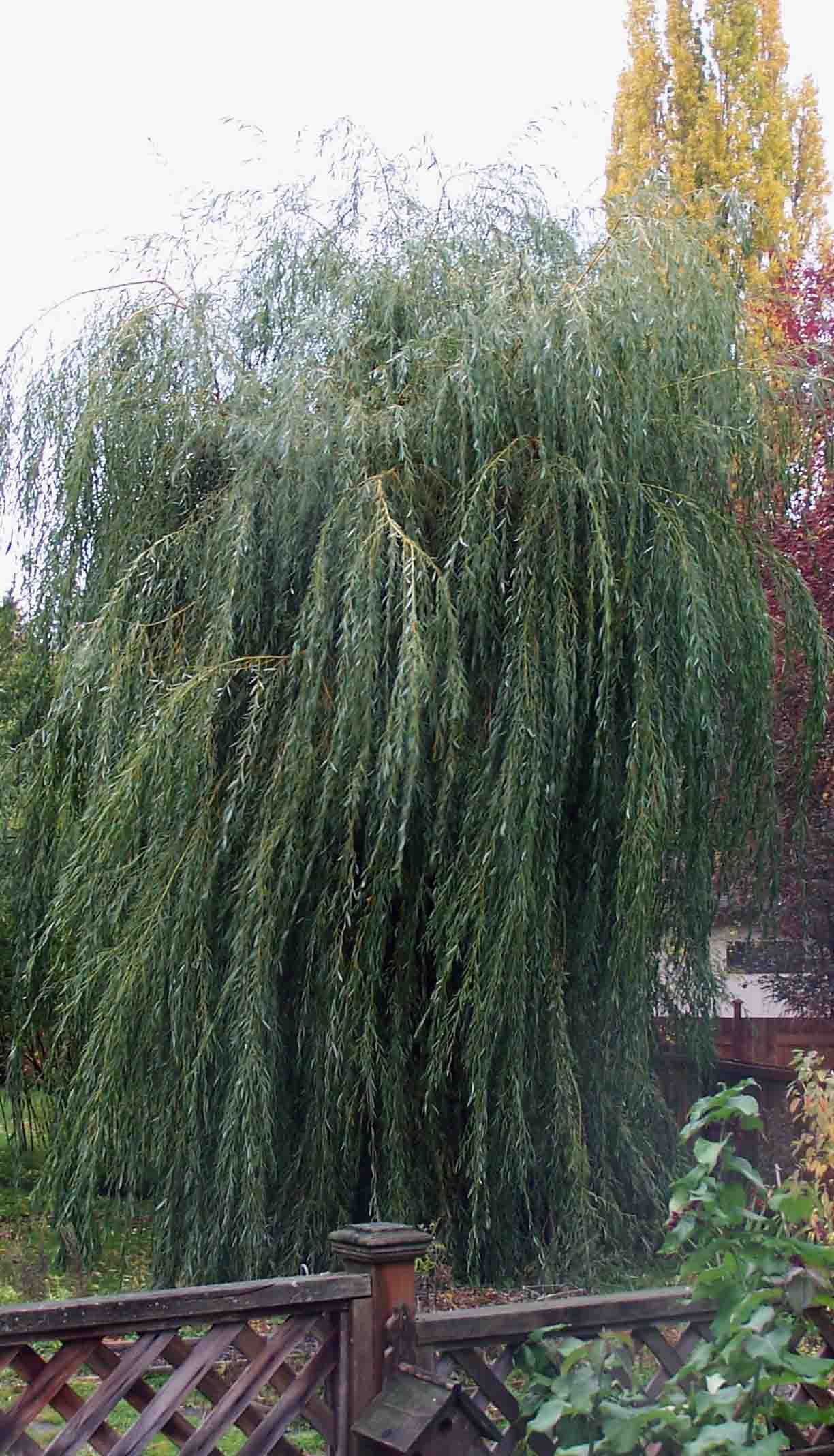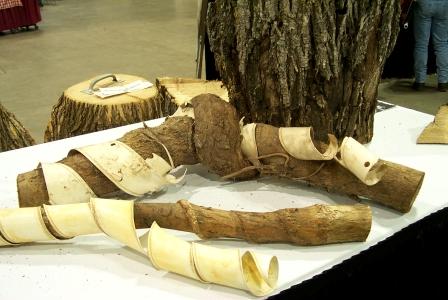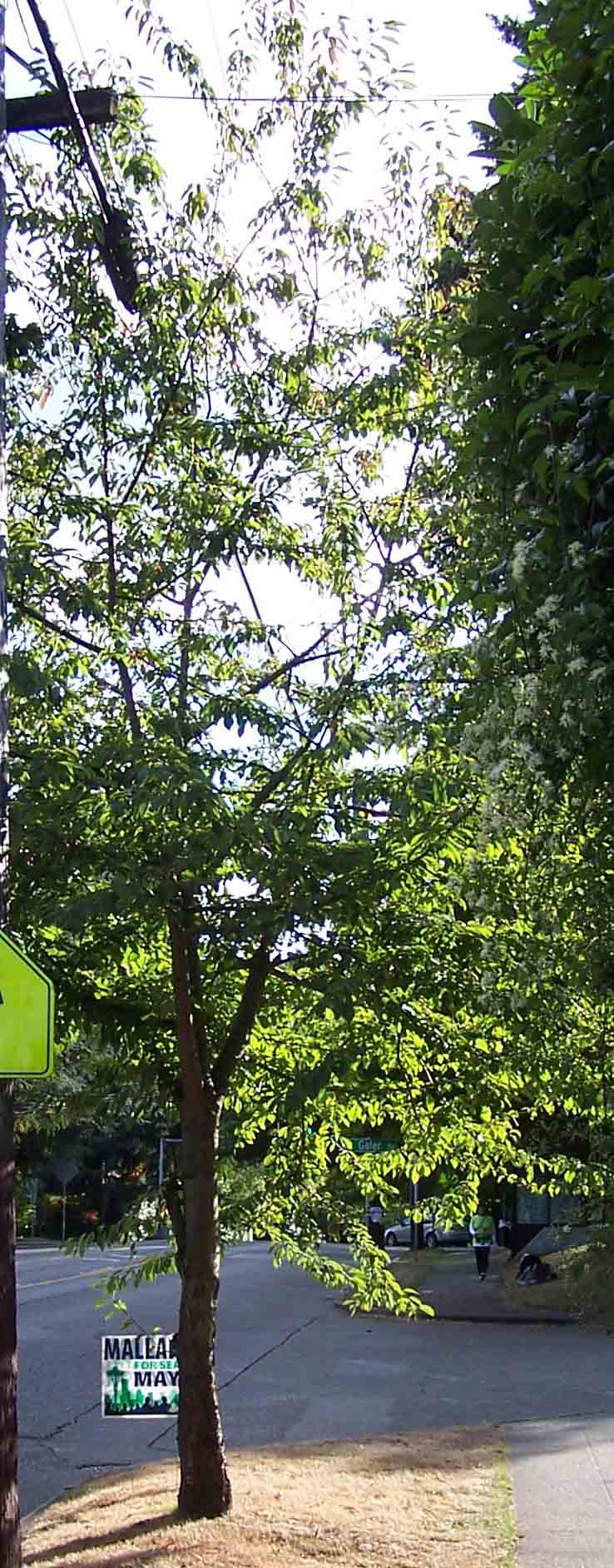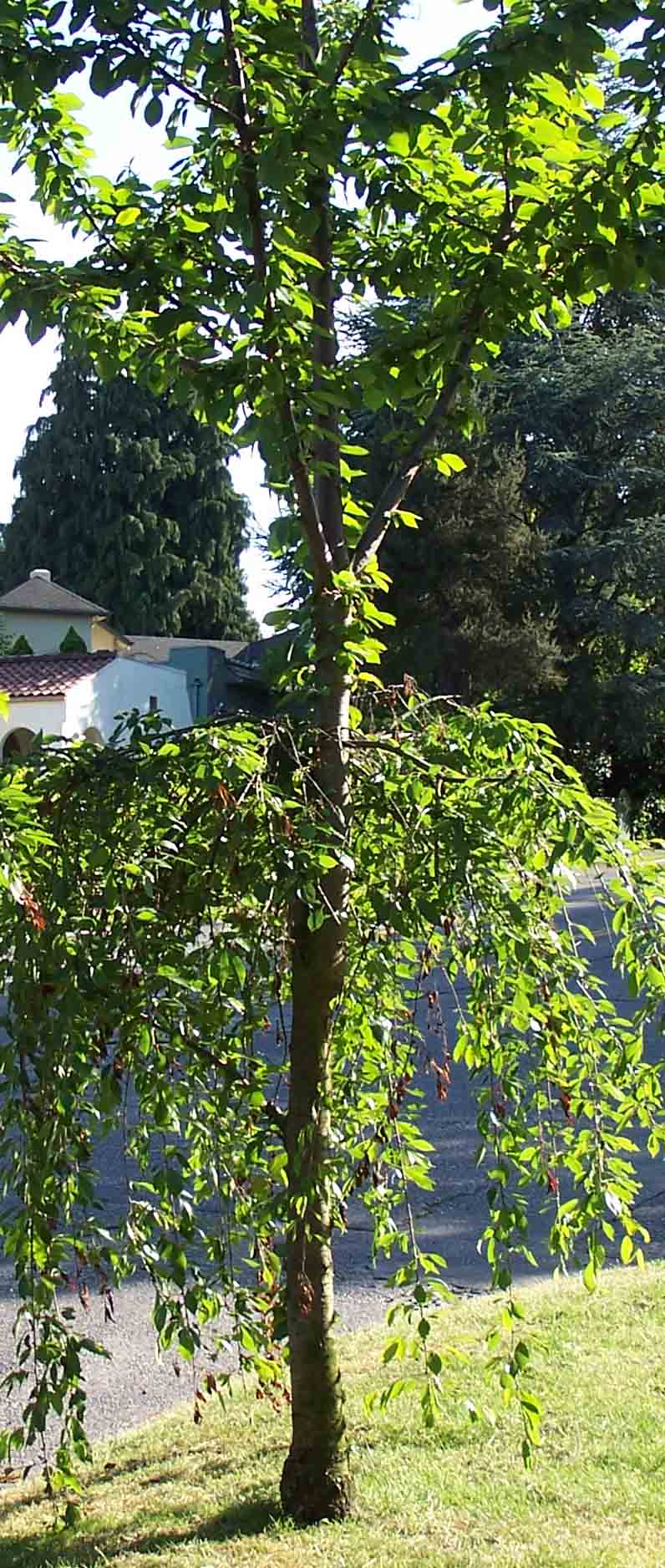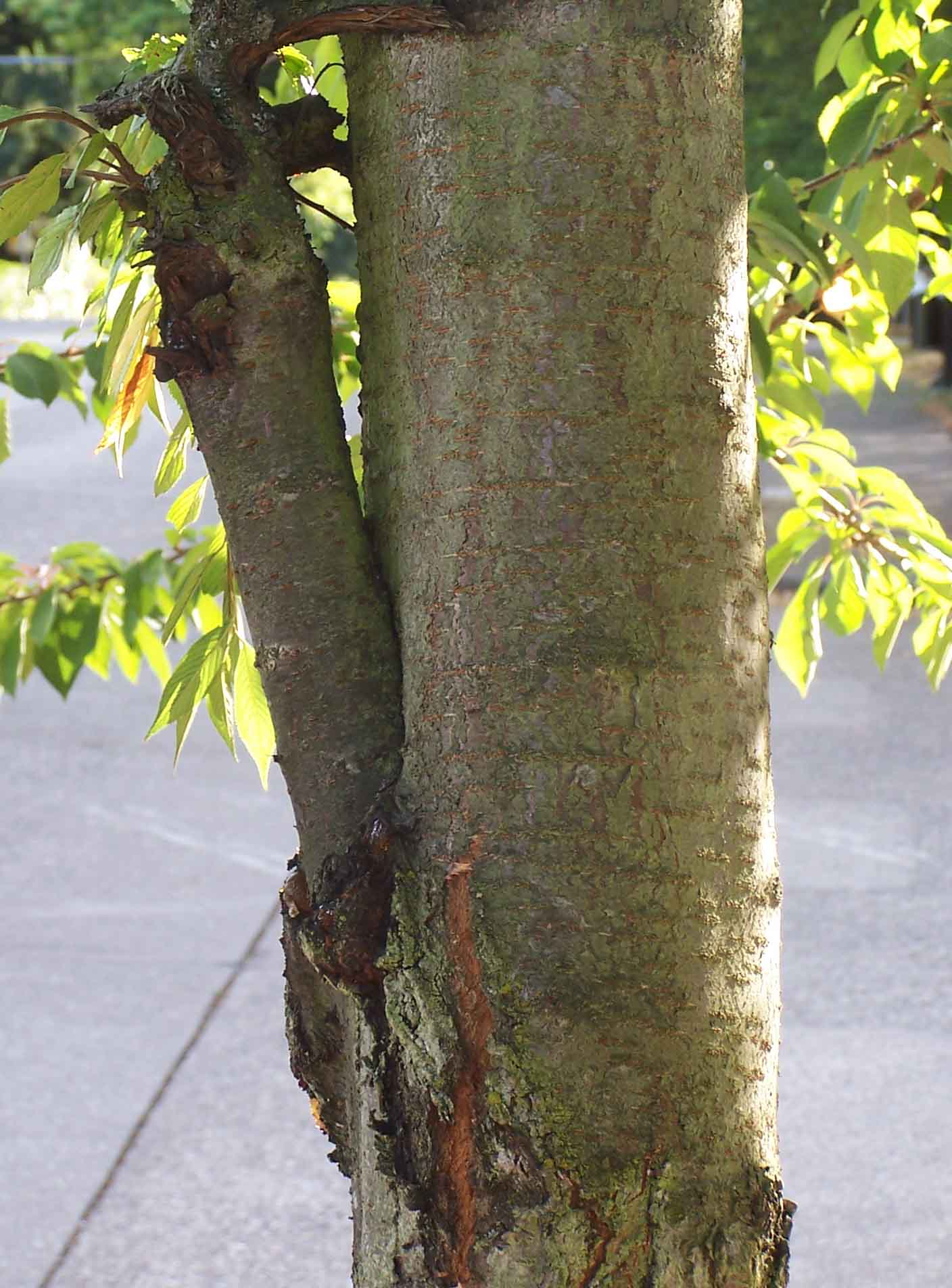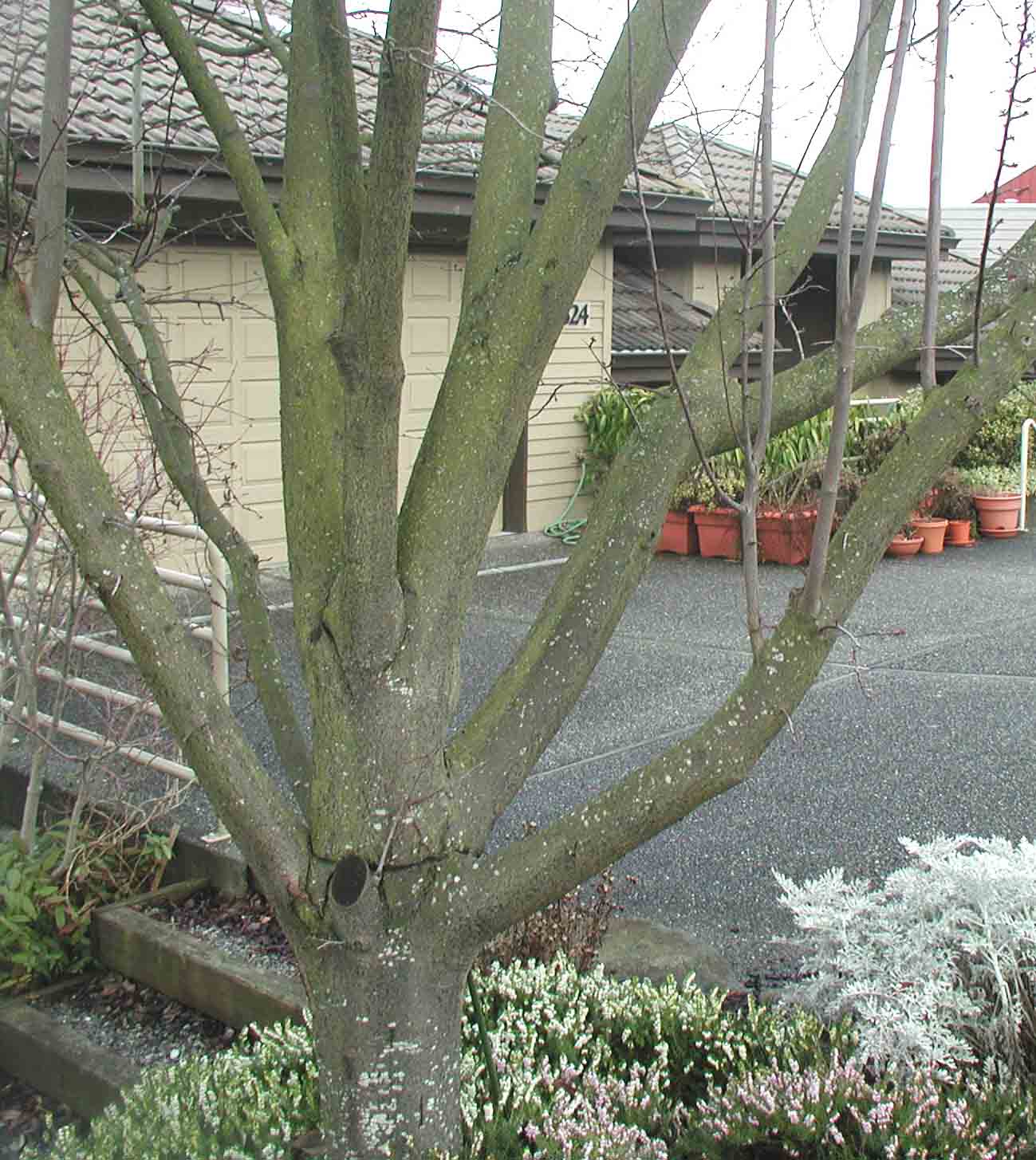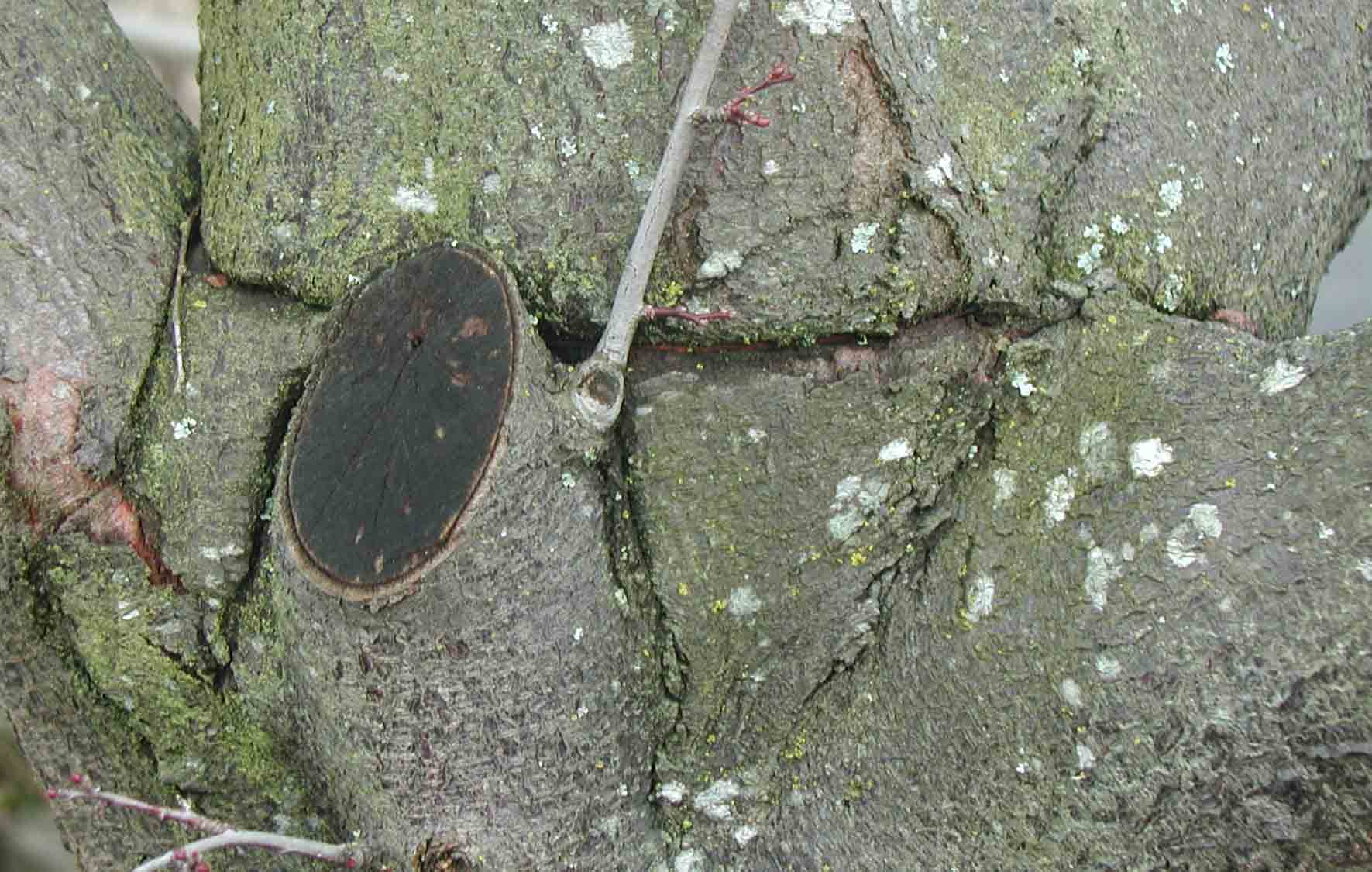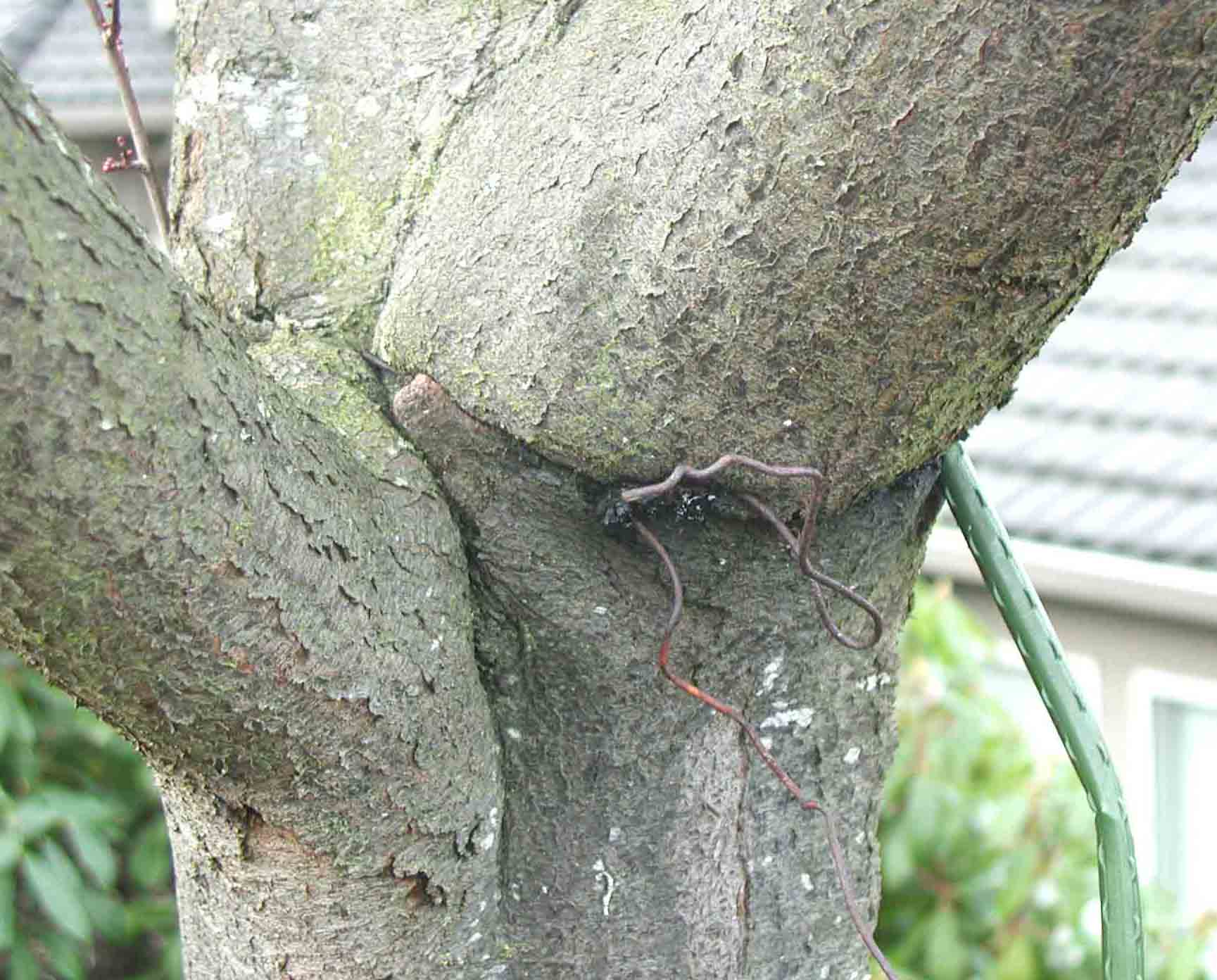I’m frequently asked to give seminars on selecting healthy plants at the nursery, especially trees and shrubs which can run hundreds of dollars. (Nobody seems to want a seminar on how to pick out a flat of petunias.) I routinely visit nurseries with my camera so I can record examples of good and not-so-good choices. What better forum to share these than on our blog? I’m also curious whether the problems we see in the Pacific NW are found elsewhere in the country, or in the world for that matter. So today we’ll hunker down on our hands and knees and inspect root flares.
The root flare (or root crown) is the point where the trunk meets the roots and should be wider than the rest of the trunk. The photo below shows this clearly:
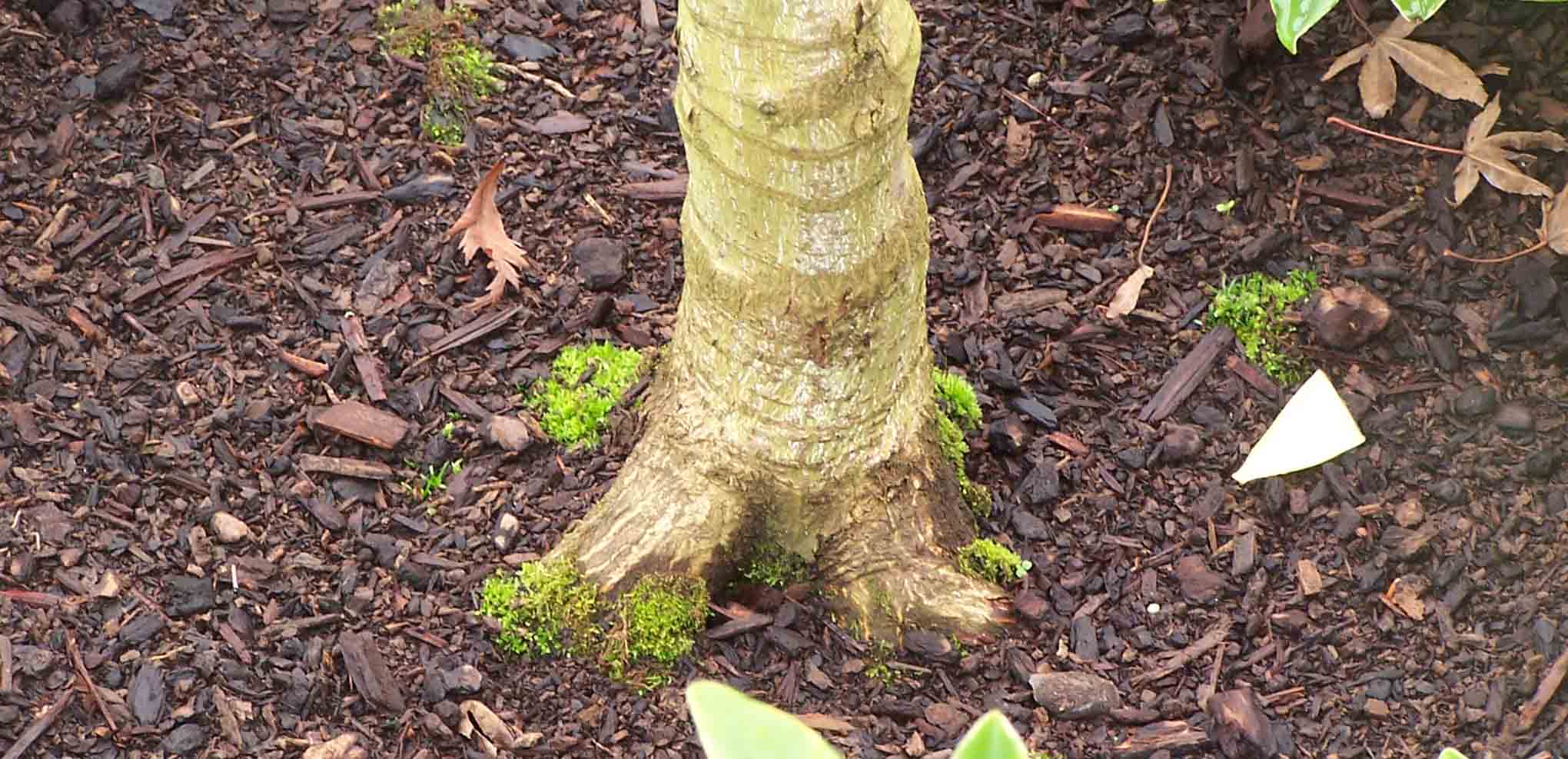
In balled and burlapped trees and shrubs, you might not be able to find the root flare as soil and/or burlap cover the root flare. The tree below is burlapped far above its root flare:
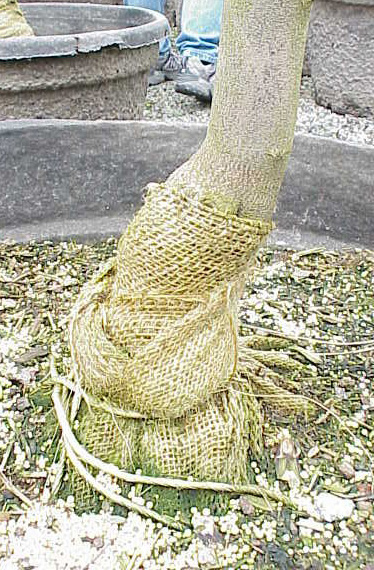
Over time, many trees and shrubs buried too deeply will develop trunk rot. You can inspect for rot by gently peeling back the burlap from the trunk and looking for damage. Don’t worry, this doesn’t hurt the root ball or the trunk:
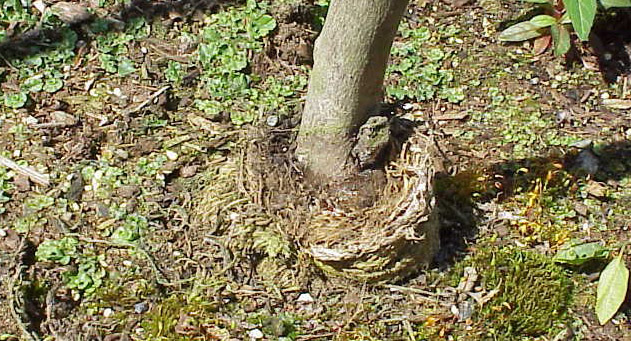
![]()
The tree in the above example already has some red flags – the presence of weeds on the soil surface suggests that it’s been in this pot for a long time. (And no, you don’t want to buy this tree.)
The most dramatic example of the problems that can occur is this weeping larch, which has been completely girdled by the rot induced by the burlap and twine around the trunk:
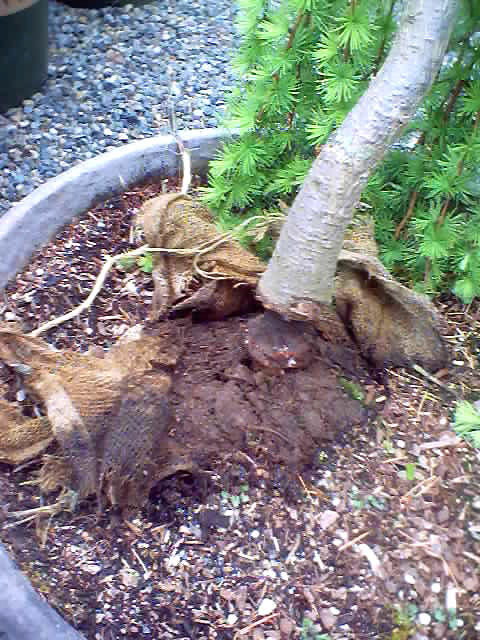
Lesson: It’s cheaper to wash your now-dirty pants than it is to buy (and eventually replace) a poor quality plant.
